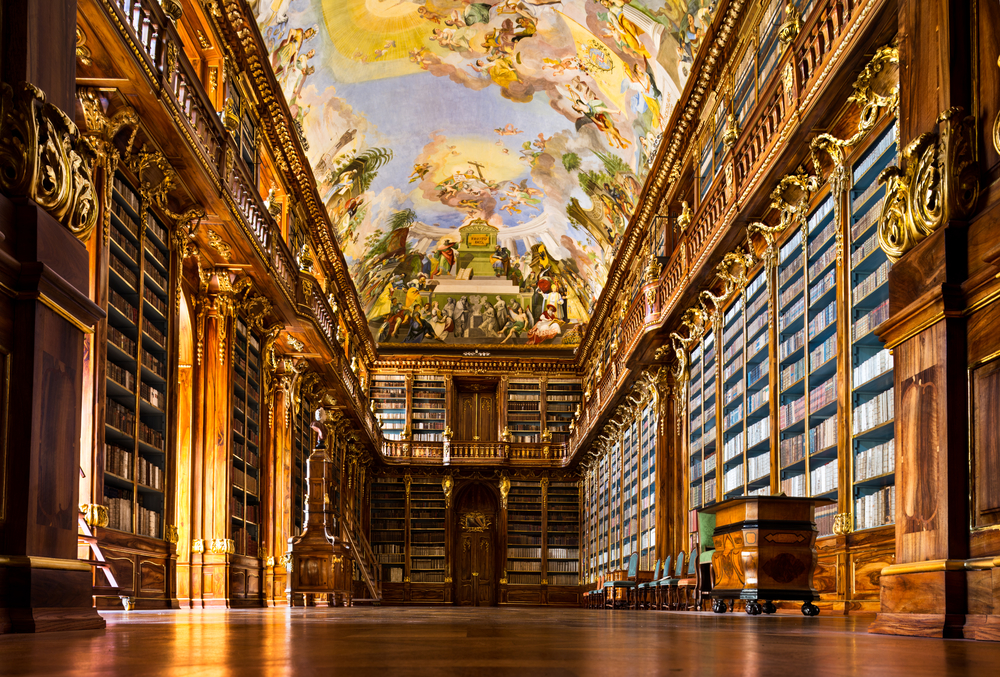After their arrival in Bohemia in 1556, the Jesuits founded the complex of Klementinum. Members of the order initially lived in a former Dominican monastery but began expanding the premises in 1653. The expansion took over 170 years to complete which accounts for the various architectural styles in the Klementinum.
Situated on more than two hectares, it is one of the largest building complexes in Europe and prominent architects of the time were involved in the design, including Carlo Lurago, Franz Maximilian Kanka, and Kilian Ignaz Dientzenhofer.
The Jesuits ran a school in the complex which included church buildings, classrooms, bedrooms, print room, pharmacy, theater, and library. In 1622, the school was promoted to a university and in 1654 it merged with the Charles-Ferdinand University which housed philosophical and theological faculties.
In 1930, the philosophical faculty moved to a new building and Klementinum became the seat of the National Library.
RELATED STORY:
RELATED STORY:
The Klementinum library opened in 1722 as part of the Jesuit University and is a superb example of Baroque architecture. The library houses over 20,000 books and those with white painted spines and red marks have been in the library since the time of the Jesuits. At the moment the library also houses a number of important and unique works of global significance.
In 1777, Maria Theresa declared the library as Public and University Library, and in 1781 director, Karel Rafael Ungar established Biblioteca Nationalis, a collection of Czech language literature. Google has been given the honor of scanning some of these rare historical books from this collection which will eventually be available in digital form on Google Books.
The library’s interior has remained intact since the 18th century. The exquisite ceiling frescoes, painted by Jan Hiebl, depict symbolic motifs of education, portraits of Jesuit saints, as well as patrons of the university and prominent representatives of this order. A remarkable collection of geographical and astronomical globes, most of which are the work of the Jesuits and astronomical clocks mostly by Jan Klein, are displayed in the center of the library.
RELATED STORY:
The Meridian Hall is on the second floor of the tower and was used for determining noon since 1842 which was signaled by waving a flag from the tower and also by a cannon shot. Signaling was stopped altogether in 1928.
Original astronomical instruments, used for measuring the angular distance between celestial objects and their height above the horizon, are displayed on the walls. Two wall quadrants, constructed by Jan Klein, are set into the walls on the southern and northern sides of the hall.
The Astronomical Tower, built in 1722, stands at a height of 68 meters and has a lead statue of Atlas carrying the celestial sphere by Matthias Bernard Braun at its top. Astronomers such as Tycho Brahe, Johannes Kepler, and Thadeus Hájek worked in Prague at the time of construction.
Although Astronomy was part of the university curriculum since its inception, the observatory was founded in Klementinum in 1751-1752, at the behest of Joseph Stepling, its first director. Astronomical instruments were installed in the tower and it became the main location for astronomical measurements. The Klemetinum tower was the only observatory in Bohemia until 1928 and operated until World War II.
*Article originally appeared at The Mind Unleashed.












